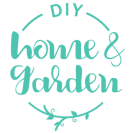Responsible homeowners are often on the lookout for danger signs that can affect their homes and act accordingly to solve the problem early. One of the most common dilemmas that they face is the occurrence of molds. Places that are damp, humid, dark, and poorly ventilated are highly vulnerable to fungal growth as molds often grow and thrive in them.
RELATED POST: 9 Tips for Keeping Mold Out of Your Home
The problems it poses do not only end in a musty, unpleasant odor, and appearance. Molds can actually damage the foundation of your home, weakening your walls, ceilings, and floors.
Aside from their effects on your house, molds are also known to put your family’s health in danger, especially for those who are prone to allergies and asthma attacks. How do you spot and remove molds?
Examine Your Home
How can you tell if the molds have fully invaded your home? Often, it is through their unmistakable smell. The molds outside your house will most likely smell stale, while that inside will bring the musty, damp stench.
They can also be spotted by the naked eye. If you look closely, you will spot them in the blackening grout lines and discoloring drywalls. But to be sure, it is better to establish their presence by using mold-detection kits as this method is quicker and more accurate than manual examination.
Get Rid of Moisture
Moisture is the primary attraction for molds. That is why the first step you should take in getting rid of them is by eliminating moisture in your home. Make sure you do not leave things damp for long, like your shower curtains and clothing.
Basements are particularly prone to molds as they are often damp. Crevices in the walls that let moisture in should be fixed. Warm air holds more moisture, so using air conditioner can actually help. The same is true when it comes to dehumidifier as it reduces humidity.
Clean Them Off
Cleaning your bathroom and kitchen regularly and keeping them dry are the best ways to address mold problems. There are many cleaning solutions that are easy to find and inexpensive.
One of them is bleach, which is very useful when used in moldy surfaces like tile grouts. However, it is not advisable to use when it comes to porous materials like wood and drywall. You can also use undiluted white vinegar, borax, or ammonia. But the safest cleaning solution lies in baking soda, which can also act as a deodorizer.
Cut Them Out
When it comes to large mold infestations, like those behind the walls and other unseen places, one way to get rid of them is by cutting them out. You can do this yourself, but with extreme caution. Wear old clothing, shoes, gloves, and goggles.
After cutting off the infected drywall, you should make sure to clean up the spores and scrub the stained surfaces with your go-to cleaning solution. But for persistent invasion, you may want to consider asking for help from professionals to thoroughly inspect your home and clean out the infestation.
Stay on Your Guard

Sometimes, molds cannot be detected right away, especially if they do not have visual manifestations. The best thing you can do is this: stay vigilant. Conduct regular inspections of your home, not only in the likely areas where molds occur.
Take care of the leaks from your roof and walls before they can cause mold growth. It is important to deal with them before they can take root.
Recognizing the problems of mold early on can do a lot to help homeowners take care of them before it is too late. So when you detect mold in your house, do not wait until you experience the symptoms. Get to work right away by taking the necessary measures of cleaning and prevention.


